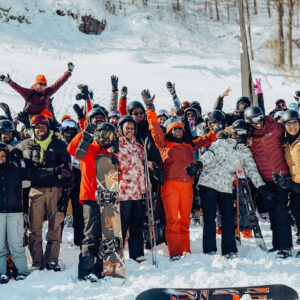A conversation with Walk Gently founder Cole Sparrow-Crawford
Making change in the outdoor industry, one that has deep roots in colonial ideology (think first, fastest, best), is slow-going. But that doesn’t faze designer Cole Sparrow-Crawford, who is the founder of Walk Gently—a platform that celebrates and honours Indigenous artists and designers by sharing their work and stories through their own voices and from their own perspectives.
We sat down with Cole to chat through the platform, the industry, and how his partnership with Arc’teryx is making change happen.
Check out the Walk Gently website for more information.
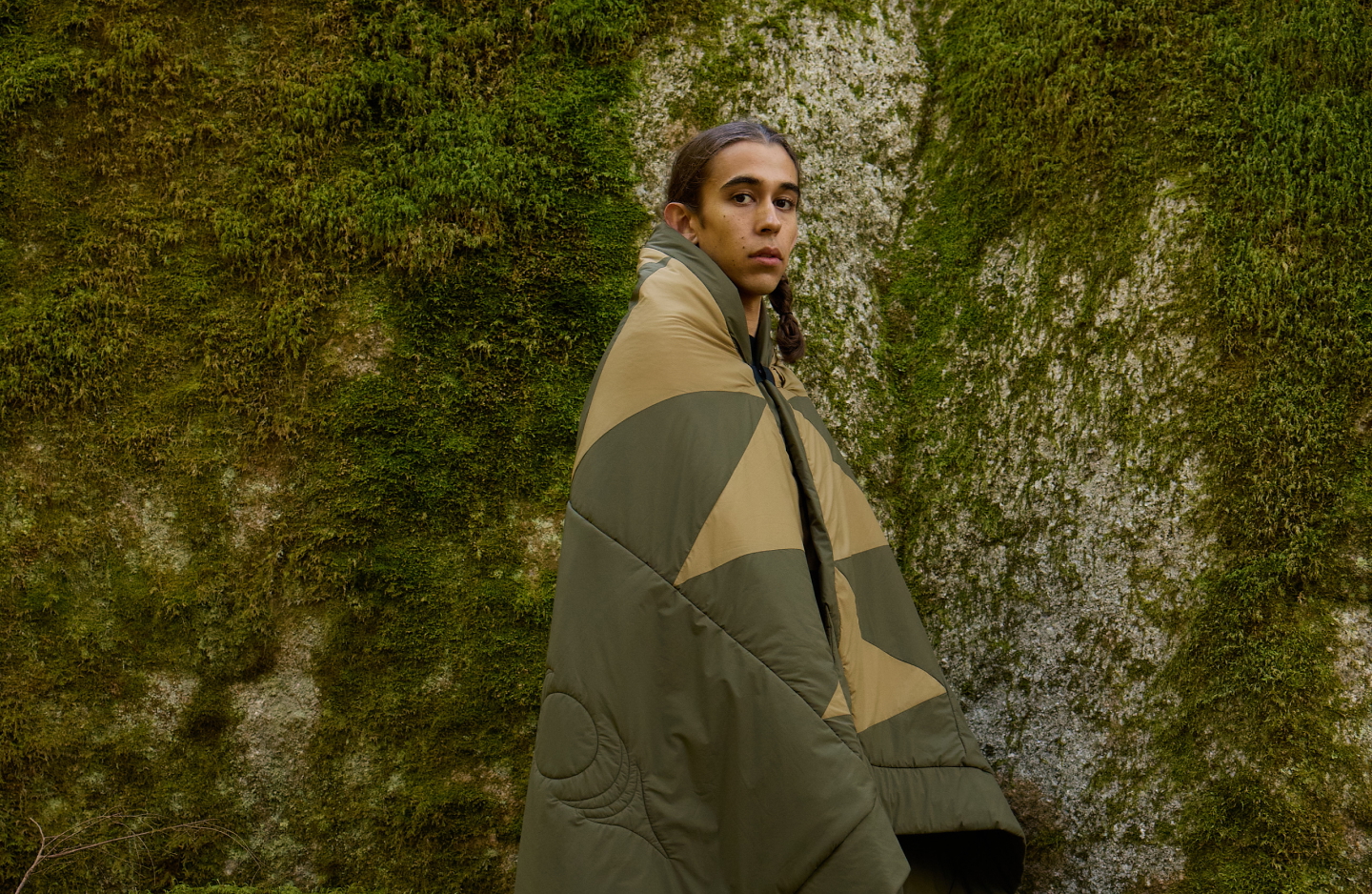
Designer and Walk Gently founder Cole Sparrow-Crawford from the xʷməθkʷəy̓əm (Musqueam) Nation.
Tell me about the relationship between Walk Gently and Arc’teryx. How has it empowered you to make the platform you want?
From the start, it’s really been about community and communication. I’ve been able to connect with leadership, and they’ve listened incredibly well, offering me the foundation and resources to broadcast Walk Gently and bring Indigenous storytelling and design to the world.
The fact that Arc’teryx was founded on Indigenous territory and is now celebrating Coastal Mountain culture on a global scale is amazing. This listening, learning, and putting action behind words is where the most growth has come—how people at the brand are willing to learn and understand…and sometimes have uncomfortable conversations. Like, How do we move forward together? How do we walk gently? How do we recreate on the land responsibly?
Continuing to work together and let Indigenous tradition, creativity, and design steer the platform’s decision-making, and continuing to bring Indigenous storytelling to the forefront of a major outdoor brand, is where I’m most excited. And I truly believe that Arc’teryx is as excited to grow the platform as I am. It feels like a rope team, like there’s no separation and the philosophy of Walk Gently is something that’s shared and embedded into the brand on a human level.
So how does that steer the messaging? It’s a partnership, and it really needs both parties to be represented and tied together. I find the most beauty and meaning in this collaborative approach. It’s like seeing Truth and Reconciliation in action—a community of non-Indigenous and Indigenous people coming together to represent shared values and set goals that lead to progress.
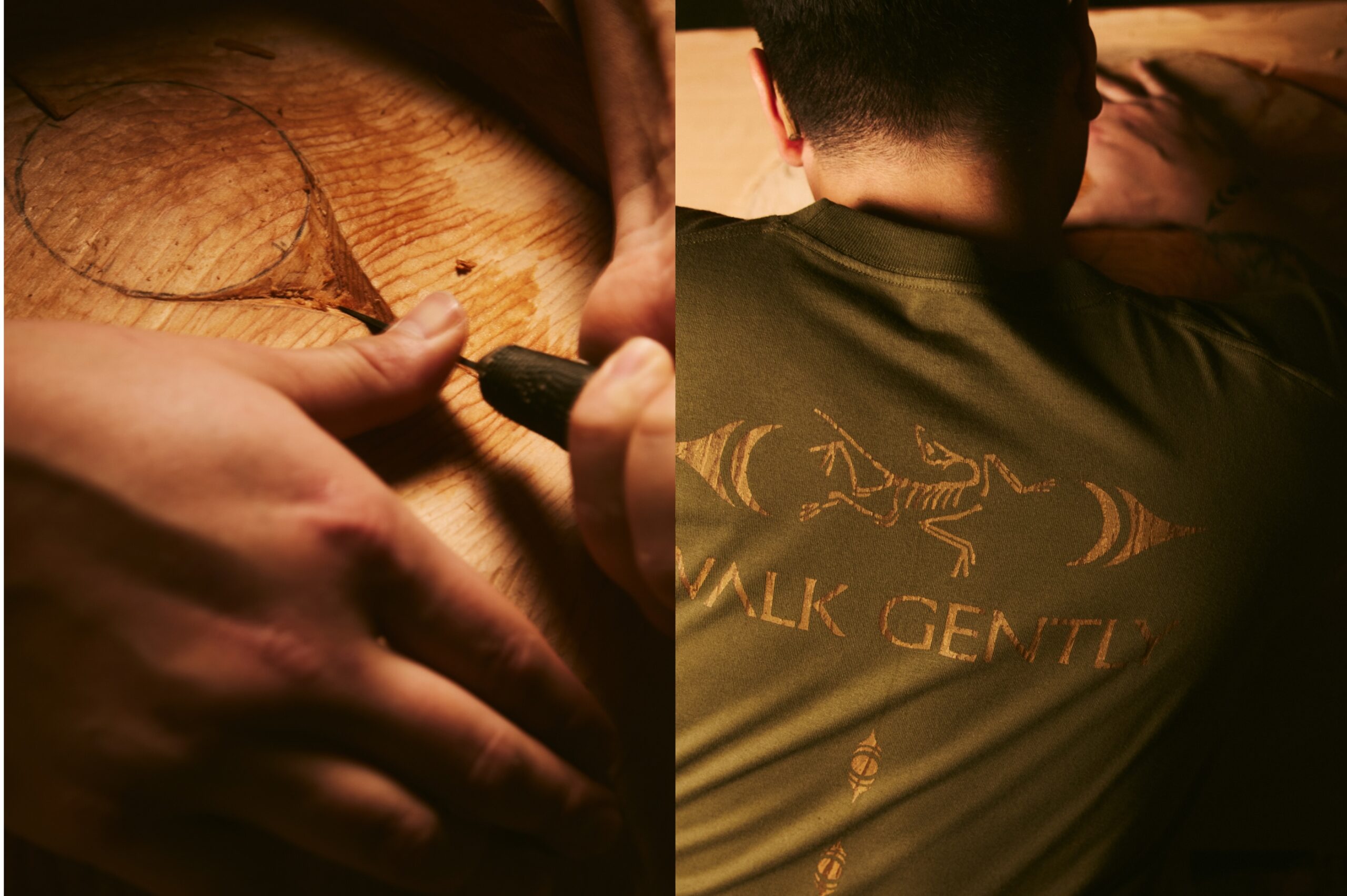
Cedar carving with Walk Gently ambassador Jonas Jones from the səlilwətaɬ (Tsleil-Waututh) Nation.
How is Arc’teryx working with you to build up the platform, and how are they integrating the platform into the brand so that there’s natural symbiosis, where your platform and the brand grow together?
I think that’s exactly what we’re after. In terms of getting to that point, it takes a lot of support and structuring so that we can represent the Indigenous community and provide them with the opportunity to come in and collaborate with us. From the start, I’ve let it be known that I’m not the sole representative of my culture and that the platform needs to extend to—and beyond—all the mountain regions inhabited by Indigenous people. To pass the mic to them and amplify their voices is what Walk Gently is all about.
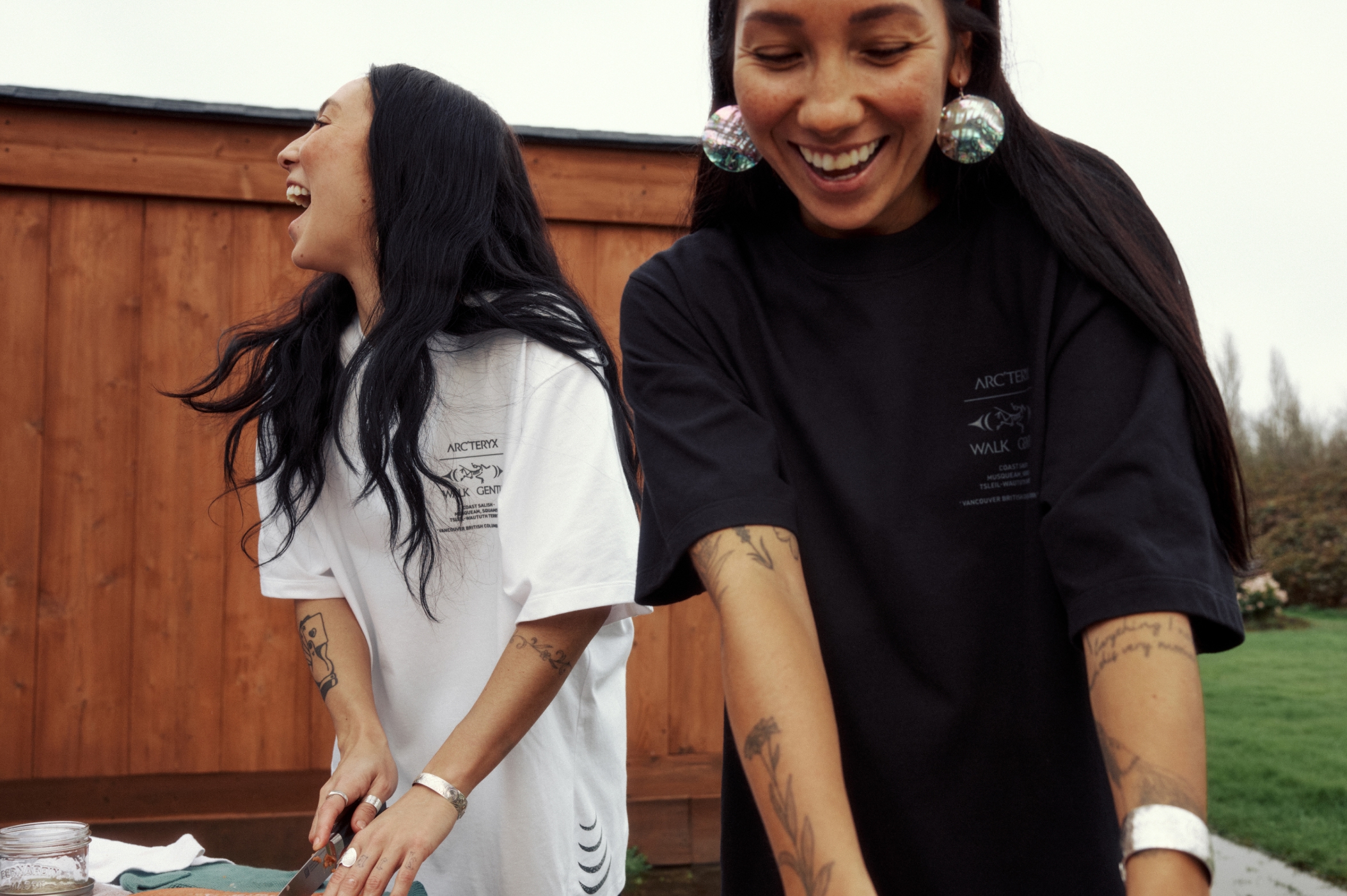
Salmon processing with Walk Gently ambassadors Myia and Tess Antone from the Sḵwx̱wú7mesh (Squamish) Nation.
How do you build a structure that focuses on collaboration with other Indigenous creatives?
One easy example is highlighting communities in an honest way. The models for all Walk Gently photoshoots and videos are friends and family from our community. They’re representatives of the culture. It’s a very significant thing to be able to work alongside them and ask ourselves the question, Do we make them feel valued?
Within the road map we’re building for Walk Gently, and looking at how other Indigenous creatives will be able to partner with the platform, we’ve been building a long-term strategy that looks at internal representation. Focusing on how other Indigenous creatives and entrepreneurs can come in and work with the brand (whether that’s full-time employment or it’s a partnership or a one-off drop) changes the narrative of who “belongs” outdoors. And it lets us show that Indigenous people have always been on the land, creating technical designs, and walking gently.
Opening the doors within our social channels—things like the Arc’teryx landing page, social, and blogs—and making room for Indigenous voices allows us to set the tone and highlight the nuances between Indigenous communities and cultures. It’s really a platform for community. That’s where I see the opportunities of the brand coming to life, acting as an amplifier so that we can truly represent each community at a human level, hear their voices, and see the work of the artists.
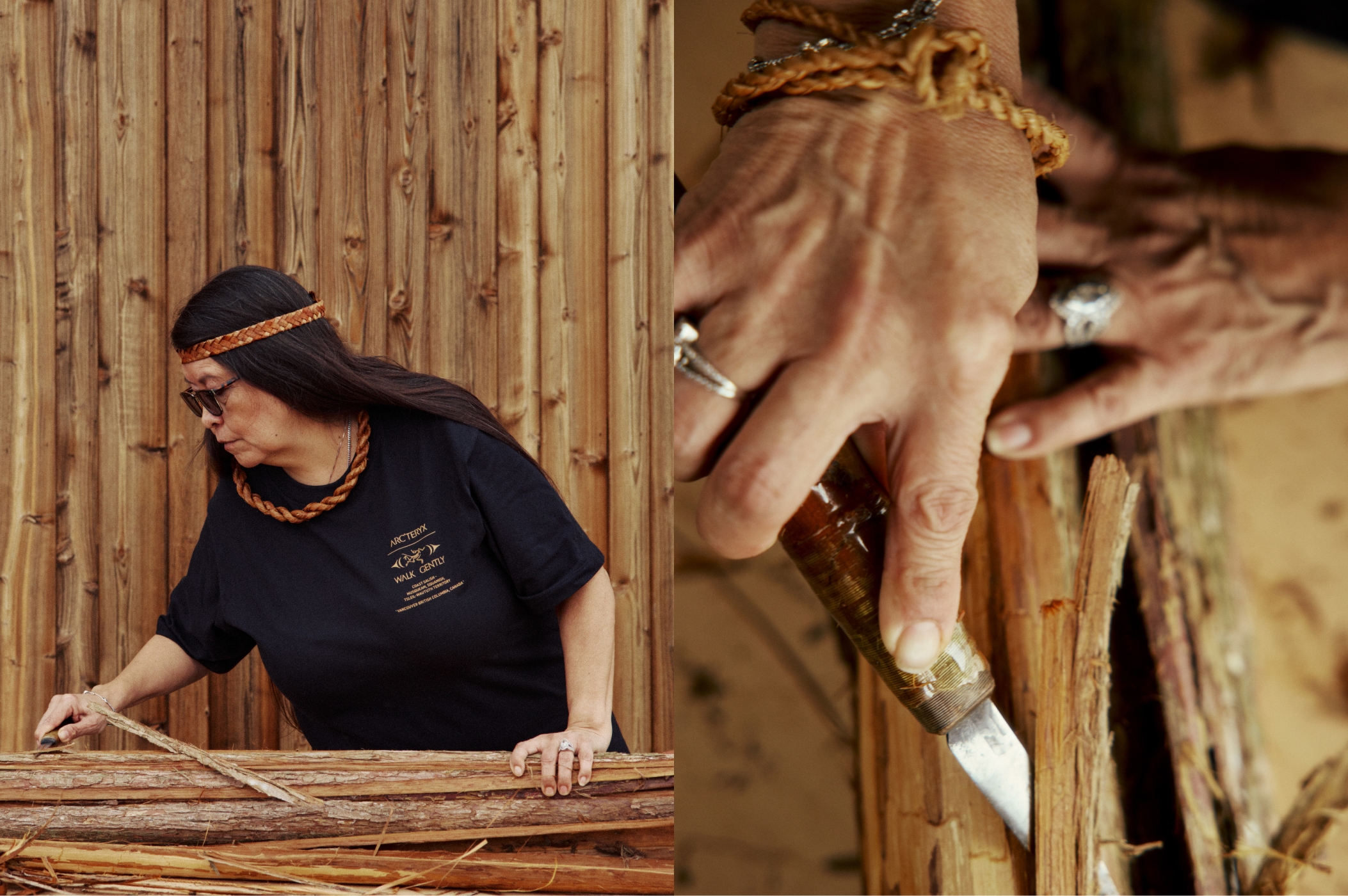
Cedar weaving with Walk Gently ambassador Vivian Mearns Notaro from the xʷməθkʷəy̓əm (Musqueam) Nation.
Talking about human-to-human connection and community, I think that so much of what Arc’teryx does and what Walk Gently does right is deeply engage with the outdoor community and work to make change within this community. What you’re talking about goes beyond a capsule or collection. There’s really this idea that it could be artist stories, a gallery showing, a film. There’s so much opportunity there. And so my question is, How does Arc’teryx help create an environment of change that goes beyond the outdoor community?
Inside the brand, it’s been about showing up together. That’s where we have this opportunity at a very human level to make change and really show it outwardly. Historically, it’s been this higher-class version of someone that belongs in and to the outdoors. Indigenous people don’t view it through that framework. I think everyone belongs outdoors. You know that this is our home. We are a part of nature. We don’t have that separation. And the messaging and voice that has carried through Walk Gently, and now Arc’teryx, is an offering to the outdoor community and is exactly what you’ve just said: Something that’s beyond product.
To feel represented by a brand like Arc’teryx, it creates an impact on the narrative of who gets to be outdoors. It changes how people view their relationship to the outdoors. The first collection is a prime example. The impact it created in my community was enormous. And the representation of our people on a global scale by an outdoor brand inspires a whole new generation to find connection with the land. That goes for everyone. I hope every person who’s underrepresented in the outdoors and feels separate from the colonial structure and the “vacant backcountry” is inspired by Walk Gently.
Going beyond the outdoor community and beyond product, we need to look at everything holistically. What side of defending the land do we want to be on? We want to be a community that respects the land, that takes care of it and supports it. That’s inherent to Indigeneity. The impact of Walk Gently is not just the performative product we’re selling. It’s this fully circular and cyclical platform that reinvests into community. It’s teaching people that they have purchasing power, and that it goes directly into Indigenous communities.
It means a lot for my people, for Indigenous people, to see this kind of commitment and representation. It opens conversations, but I don’t think it even needs to be a conversation. It’s respect that we’re gaining.
That’s really the coolest part that I’ve felt throughout this process on an individual level—feeling how people interact with me as an Indigenous person. I have a little bit more respect for myself and my culture, and I know that this respect will only continue to grow.
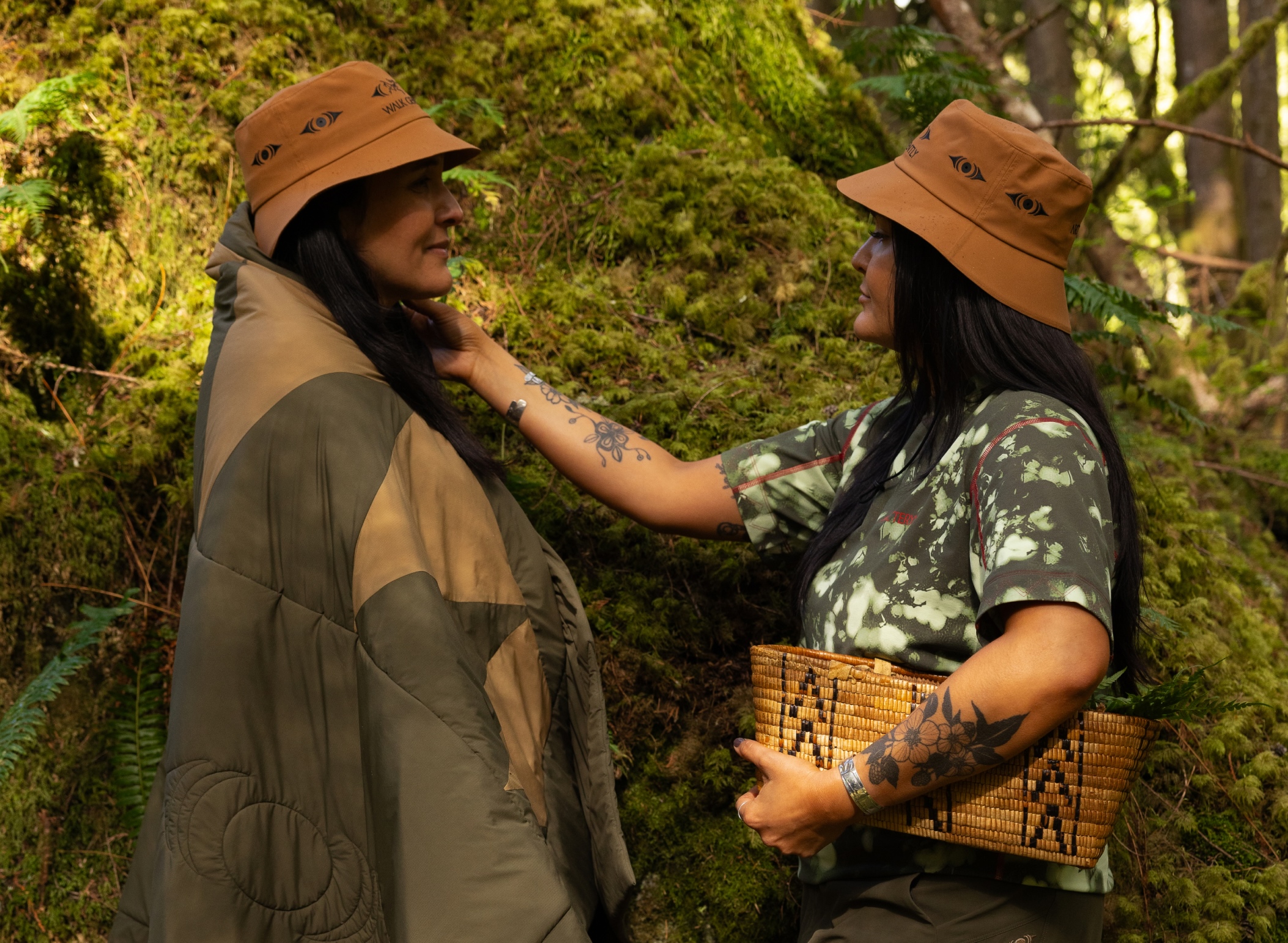
Leigh Joseph and Salia Joseph from the Sḵwx̱wú7mesh (Squamish) Nation.
You’re at the table with leaders at the organization, and you’re able to give input and drive change. I see it and feel it in things like our messaging, the language we use, and overall representation. And it’s incredible. Can you talk about long-term goals and how they’ll be put into action? What’s the fuel that will keep Walk Gently going?
So that’s the question I continue to ask our leaders. I think that it’s looking at how we continue to grow the platform and asking, What effect does that have on the rest of the brand? For example, is our messaging one of conquering the outdoors? Is it, you know, being the first, the fastest, or the best? I think these kinds of philosophical questions are important, and what’s amazing is that they’re landing on open ears. People are listening.
For Indigenous people and for Walk Gently, the old-school branding of conquering nature doesn’t align with us, and that’s something I’m asking about.
But it’s also looking in the mirror and listening to others about things I need to change. You know, if Walk Gently needs to revise its branding and messaging, I’m all ears. So then both sides of our community can feel a part of this. It’s Truth and Reconciliation. It’s meeting people where they’re at so we can get to the same place together.
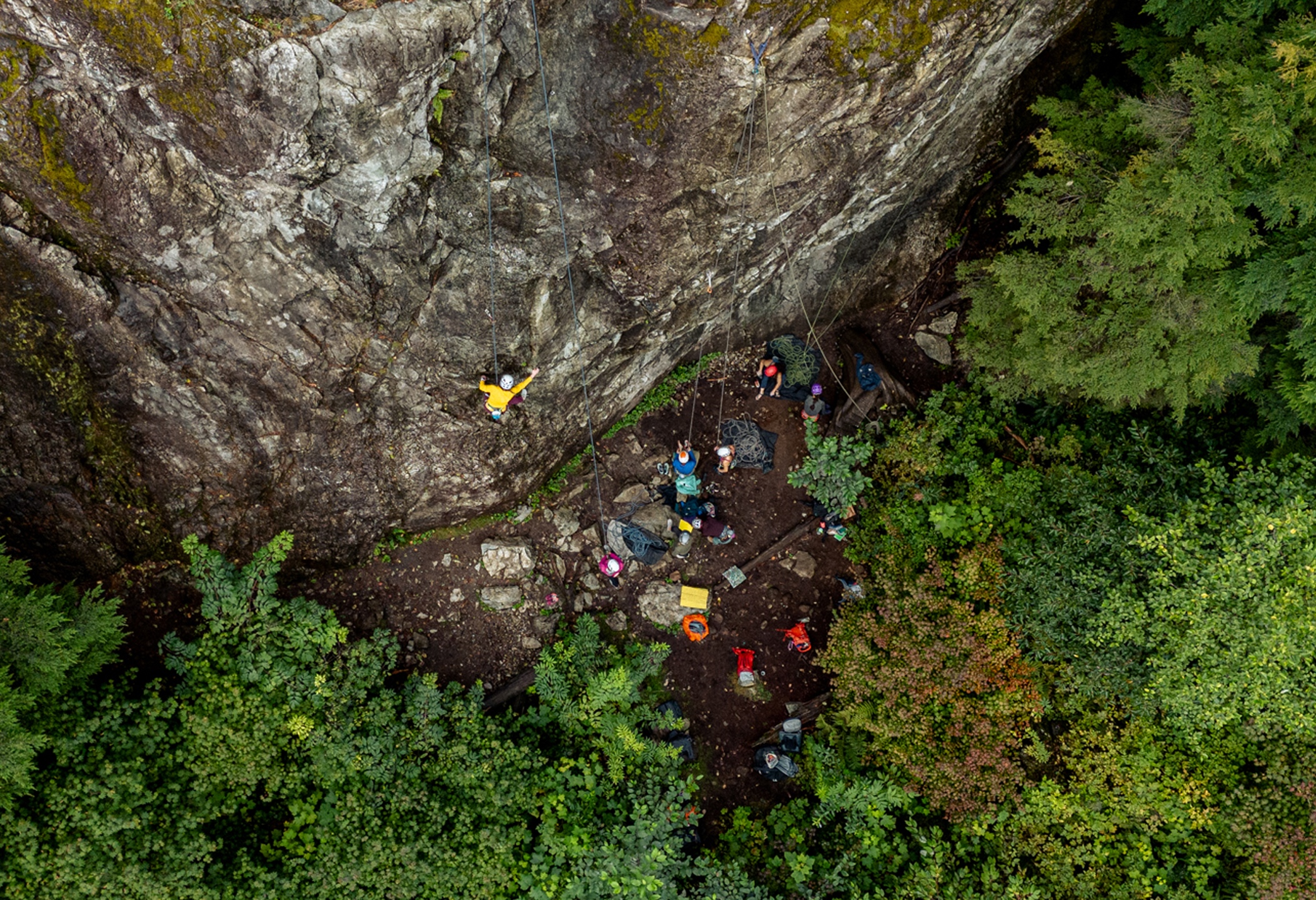
Participants at the Arc’teryx Climb Academy Sḵwx̱wú7mesh.
How does Arc’teryx and the non-Indigenous outdoor community engage and listen so that things can continue to change?
Everyone’s at a different point in their approach, their understanding. Someone’s relationship to Walk Gently, to the land, and to this country is dependent on what region of the world they’re in and on their relationship with colonialism: How that structure affects them, their thinking, and how they show up in society.
What I hope for the non-Indigenous community is to go through the process, be willing to learn, and challenge your beliefs. Every individual that gets out with Arc’teryx gear and goes climbing or hiking or whatever has a relationship to the history of this place, and that will reflect in how they show up. I think it’s about asking how we can properly respect everything that has come before us. And I’m asking Indigenous people to do the same.
There is no separation. I think we’re asking everyone to do this because everyone’s at a different point on their journey—they might even be Indigenous, and they don’t want to belong to that. They don’t want to be a part of that conversation. So we’re offering this platform to everyone. To someone who might be removed from their culture, to you, to the outdoor industry, to people in another country. We’re offering them the chance to understand the land, its history, and the people and cultures who have been on this land since time immemorial.
There’s a lot to unpack there. As long as we do it together as Indigenous people and non-Indigenous people, and we continue to have these conversations on behalf of our ancestors and the territories that we occupy, it’s working. It’s honouring the future.
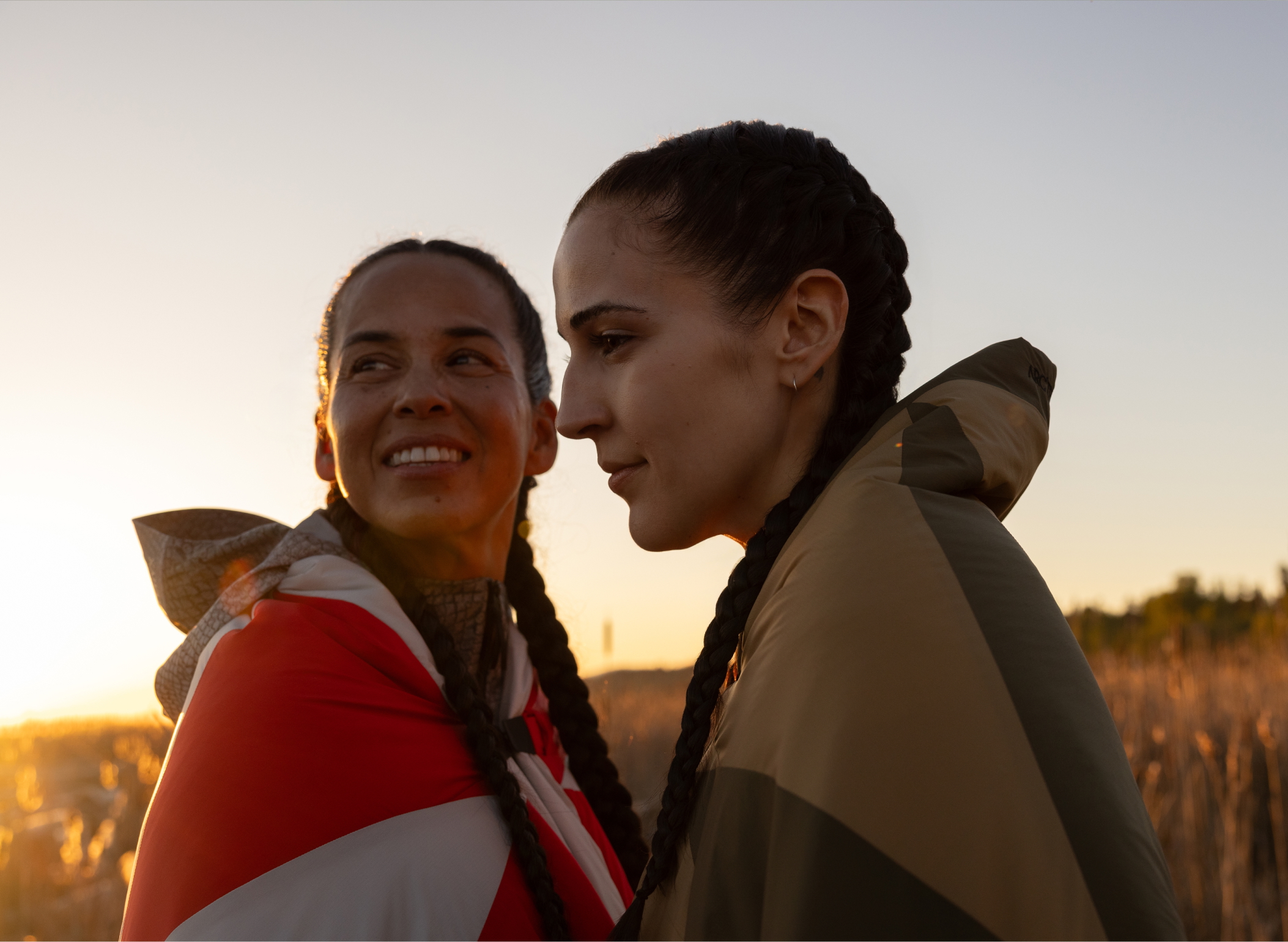
Larissa Grant and Faith Sparrow-Crawford from the xʷməθkʷəy̓əm (Musqueam) Nation.
Can you talk a little more about bringing the message of Indigeneity to the world—to a population of people that hasn’t had much visibility into the original inhabitants of North America? What does it mean to you to have Walk Gently be a global platform?
For this global community to have conversations about Indigeneity, I think it’s game-changing. Not just for the outdoor industry, but for human-to-human connection. For Indigenous people. For our ancestors.
Arc’teryx is willing to take these risks. You know, that’s human. It goes beyond business. After work, this is still my life and it’s still something that I’m up against outside. The people here understand that. And that’s the start of something special.
Check out the Walk Gently website for more information.



